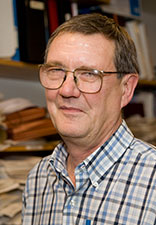Photobiomodulation for Treatment of Traumatic Brain Injury and Other Brain Disorders
Hosted By: Therapeutic Laser Applications Technical Group
07 October 2020 11:00 - 12:00
Eastern Time (US & Canada) (UTC -05:00)Photobiomodulation is traditionally associated with treatment of various skin conditions, including wound healing. However, in recent years there has been a growing interest in applying this method for treatment of brain disorders. Traumatic brain injury is a common type of head trauma, affecting victims of sports injuries, assaults, injuries suffered in military conflict and road traffic accidents. There is a lack of therapeutic methods for traumatic brain injury, especially those that can be applied non-invasively.
In this webinar hosted by the OSA Therapeutic Laser Applications Technical Group, Michael Hamblin will discuss principles of photobiomodulation (PBM) for treatment of traumatic brain injury. PBM employs red or near-infrared (NIR) light (600-1100nm) from lasers or, in some cases, light emitting diodes to stimulate healing, protect tissue from dying, increase mitochondrial function, improve blood flow, and tissue oxygenation. Results of small animal model studies as well as human studies show that PBM can also act to reduce swelling, increase antioxidants, decrease inflammation, protect against apoptosis, and modulate microglial activation state.
All these mechanisms of action strongly suggest that PBM delivered to the head should be beneficial in cases of both acute and chronic traumatic brain injury. Moreover, PBM has now been shown to be effective against neurodegenerative diseases (Alzheimer's and Parkinson's) and psychiatric disorders (depression, anxiety and opioid addiction). Cognitive enhancement in normal individuals is another application.
What You Will Learn:
- Therapeutic effects of NIR light treatment on brain tissues
- Principles and mechanisms of PBM for treatment of traumatic brain injury
- Applications of PBM to treatment of neurodegenerative diseases and psychiatric disorders
Who Should Attend:
- Students, scientists, physicians interested in applications of non-invasive light therapies for healing of brain tissues and improving cognitive function in patients with various types of encephalopathies
About the Presenter: Michael R. Hamblin, Harvard Medical School and Wellman Center for Photomedicine at Massachusetts General Hospital
 Michael Hamblin is a Principal Investigator at the Wellman Center for Photomedicine at Massachusetts General Hospital, an Associate Professor of Dermatology at Harvard Medical School and a member of the Affiliated Faculty of Harvard-MIT Division of Health Science and Technology. He was trained as a synthetic organic chemist and received his PhD from Trent University in England. His research interests are now broadly in the area of phototherapy for multiple diseases. One focus is the study of new photosensitizers for infections, cancer, and heart disease. A specialty of the Hamblin lab is the development of new animal models for testing PDT approaches. The study of how PDT can activate the host immune system to attack advanced cancer is a new direction in the Hamblin lab. A second focus is low-level light therapy (LLLT) or photobiomodulation for wound healing, arthritis, traumatic brain injury, psychiatric disorders, and hair regrowth. Dr. Hamblin has published over 300 peer-reviewed articles, over 150 conference proceedings, book chapters and international abstracts, and he holds eight patents. He has edited the most recent and comprehensive textbook on PDT entitled "Advances in Photodynamic Therapy: Basic, Translational and Clinical". He also co-edited a book entitled "Photodynamic Inactivation of Microbial Pathogens: Medical and Environmental Applications", an authoritative and comprehensive textbook entitled "Handbook of Photomedicine" with 70 chapters and 800 pages, a textbook entitled "Applications of Nanoscience in Photomedicine" and another comprehensive handbook called "Handbook of Low Level Laser (Light) Therapy".
Michael Hamblin is a Principal Investigator at the Wellman Center for Photomedicine at Massachusetts General Hospital, an Associate Professor of Dermatology at Harvard Medical School and a member of the Affiliated Faculty of Harvard-MIT Division of Health Science and Technology. He was trained as a synthetic organic chemist and received his PhD from Trent University in England. His research interests are now broadly in the area of phototherapy for multiple diseases. One focus is the study of new photosensitizers for infections, cancer, and heart disease. A specialty of the Hamblin lab is the development of new animal models for testing PDT approaches. The study of how PDT can activate the host immune system to attack advanced cancer is a new direction in the Hamblin lab. A second focus is low-level light therapy (LLLT) or photobiomodulation for wound healing, arthritis, traumatic brain injury, psychiatric disorders, and hair regrowth. Dr. Hamblin has published over 300 peer-reviewed articles, over 150 conference proceedings, book chapters and international abstracts, and he holds eight patents. He has edited the most recent and comprehensive textbook on PDT entitled "Advances in Photodynamic Therapy: Basic, Translational and Clinical". He also co-edited a book entitled "Photodynamic Inactivation of Microbial Pathogens: Medical and Environmental Applications", an authoritative and comprehensive textbook entitled "Handbook of Photomedicine" with 70 chapters and 800 pages, a textbook entitled "Applications of Nanoscience in Photomedicine" and another comprehensive handbook called "Handbook of Low Level Laser (Light) Therapy".
